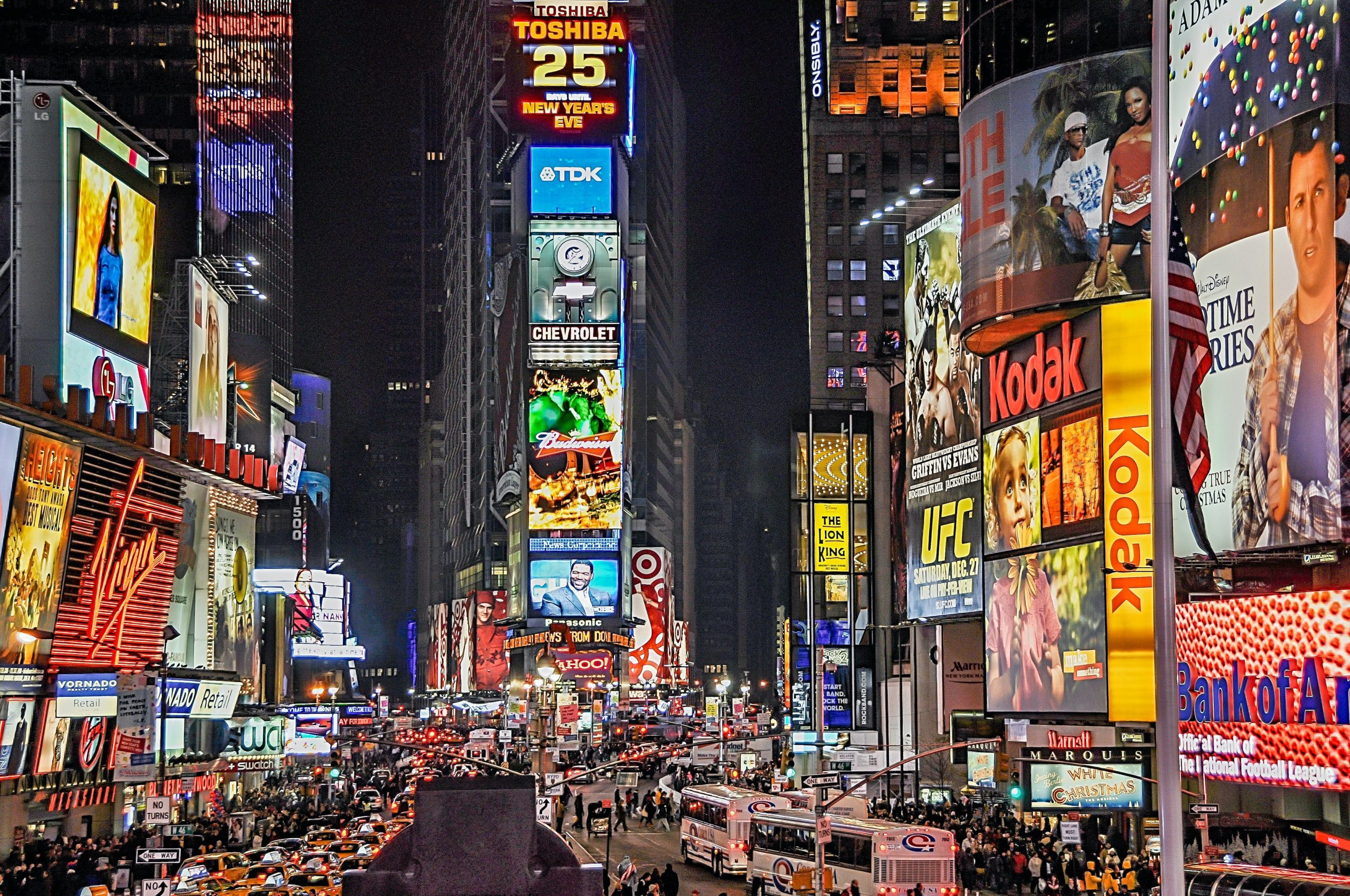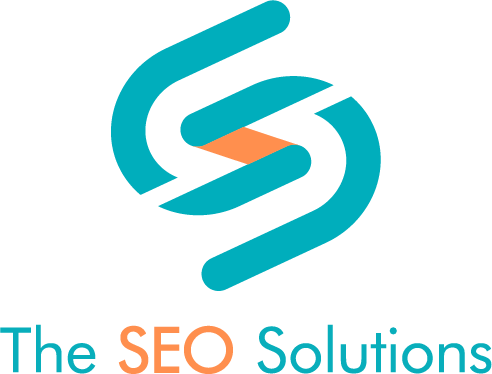Introduction to Social Advertising
Social advertising is a type of advertising strategy that relies on social networks in generating, targeting and deliver marketing communication. With 59% of the world’s population using at least one social media and average daily usage of 2 hours and 29 minutes (Global Webindex July 2022), it is an offshoot of digital marketing to explore social media advertising.
It is an advertising strategy that leverages clickable and actionable advertisements to increase a brand’s awareness, get leads, and drive sales to boost one’s business.
The Benefits of Social Advertising
Social advertising is becoming one of the most employed digital marketing strategies because it offers multiple benefits for brands and businesses. Especially if the brands or businesses are targeting the millennial demographic because the said demographic care about presence, quality, and communication.
And social media advertising provides the said benefits.
1. Hyper-target customers
Hyper-targeting means the ability to deliver marketing messages and content to a specific interest-based audience. An example of one such platform recommended for hyper-targeting is Instagram since it has over a billion active users.
All of their data are available to businesses and advertisers, which means businesses and advertisers will be able to launch a very targeted ad campaign that matches their consumers’ interests.
The other social media platforms such as Facebook, Twitter, TikTok, Pinterest, and Snapchat are also good for hyper-targeting since all of them have large amounts of active users daily.
2. Create more brand awareness
Social advertising also will increase brand awareness for businesses. When your ad campaign appears on someone’s social media feed, they will become more aware of your brand and business — and retain it on a subconscious level afterwards. So when they see anything that resembles or reminds them of your brand and business, the said awareness will emerge and remember your brand and business once more at that moment.
But of course, for that to happen, it must be targeted and shown to relevant demographics.
3. It helps build an audience
In addition to being able to target specific audiences directly, social advertising also helps build audiences for your brand and business by saving the data of your target audiences and then utilising it for future campaigns. It is imperative that you build both social media audiences and landing page audiences, to ensure that you can create a consistent and successful marketing ad campaign in the future.
Here’s an example; you targeted and currently targeting audiences that were created one month to six months ago, so when someone clicks on your ad and visits the landing page or signs up for email lists, you can retarget them at a later date with contextual advertising and irresistible offers.
4. Boosts conversion rate
According to Digital 2020, 27% of people surveyed mentioned that they discovered new brands and products from social adverts.
Using platforms such as Facebook Ads Manager, Linkedin Campaign Managers, Twitter Promote Mode, and TikTok Ads Manager will let you come up with detailed audience targeting for your ad campaigns using the features and tools on those platforms. By using the right targeting, you will be able to make sure your ad campaigns reach the target audiences who likely have an interest in your products or services.
Another way social advertising can increase your conversion rates is by retargeting social adverts to nurture warm leads and encourage your customers to re-engage with your business. For example, maybe include an offer for returning customers.
5. Low-cost advertising
If you are worried about the cost needed to run social advertising campaigns, then worry not. Because social advertising is a cost-effective marketing strategy for your business.
This is because social advertising runs on a pay-per-click mode, one of many cost structures. This means you will only need to pay when someone takes an action on your ads. As a result, you will be able to keep the advertising costs low and only pay when someone takes a specific action on your ads.
To help you get an insight into cost-per-click for each industry, we have prepared a table for you to look through.
| Industry | Average Search (CPC) |
| Advocacy | $1.43 |
| Auto | $2.46 |
| B2B | $3.33 |
| Consumer Services | $6.40 |
| Dating & Personals | $2.78 |
| E-commerce | $1.16 |
| Education | $2.40 |
| Employment Services | $2.04 |
| Finance & Insurance | $3.44 |
| Health & Medical | $2.62 |
| Home Goods | $2.94 |
| Industrial Services | $2.56 |
| Legal | $6.75 |
| Real Estate | $2.37 |
| Technology | $3.80 |
| Travel & Hospitality | $1.53 |
Understanding The Objectives of Social Advertising
For you to effectively leverage the benefits of social advertising and its tools, you will need to understand social advertising objectives. This is the first step in setting up a successful social media ad campaign.
So it is important to understand social advertising objectives before anything else. There are three key points or funnels in social media advertising objectives:
#1 Awareness
First, you need to understand you need to create awareness before anything else, especially if your business is new or recently rebranded. Because if audiences are not aware of your brand and business existence, then you won’t see any traffic and sales. By raising awareness to audiences who likely will remember your ad, you will be able to reach a large number of audiences.
And your awareness campaign should provide brief and concise information about your products, services, and brand direction to help your target audiences understand what your brand and business are all about.
#2 Consideration
Consideration is when the audience has become familiar with or aware of your brand, products, and services. At this point, they will research your brand, business, products, or services; how you can help them solve their pain point. So they will visit your online or offline store to understand your offerings.
#3 Conversion
Conversion is the phase where your target audience takes and commits an action that is considered valuable to your business such as making an online purchase, subscribing to services, calling your business, or hiring your service.
It is recommended that your ads should include a call to action button to encourage click-through that will lead your audience to a product or service page where they can purchase or subscribe.
Types of Social Media Ads
Before you start running social media advertising campaigns, you need to understand how each of the major social media platforms runs the ads. This is to help you calculate the cost required, plan content, and identify if it’s the social media platform that your target audience often spends their time on.
Hold on, no need to Google each of them one by one, because we’ve already made the effort to list and compile it all for you to read.
1. Facebook Ads

Facebook Ads is the best platform to help you achieve thanks to its detailed targeting options, a variety of digital marketing tools, and a huge pool of users with diverse demographics.
On Facebook, there are several ad placement options available, such as on Facebook’s Feed, Stories, Messenger, and Reels. Each ad placement offers creative and unique ways to reach and catch your target audience’s attention.
In addition to that, Facebook Ads presents you with a few ads formats that you can utilise to suit your social advertising campaign goals and needs such as
- Video ads
- Stories ads
- Photo ads
- Carousel ads
- Slideshow ads
- Collection ads
- Facebook Messenger ads
- Playable ads
- Dynamic ads
- Poll ads
- Messenger ads
- Augmented reality ads (AR)
Facebook also offers Instant Experience ads feature, a full-screen interactive and informational page that opens up when someone taps your ad on a mobile device. You can use the Instant Experience to highlight products or services, capture your audience’s attention, tell your brand story, and add more content to your ads. Besides that, the Instant Experience feature also allows you to analyse results with metrics after you have launched ad campaigns. You will be able to analyse view time, view percentage, and a few other metrics using the Instant Experience feature.
2. Instagram Ads
Instagram ads are more suitable to run if your focus is the millennials because both Gen Z and Gen X make up the majority of Instagram users.
On Instagram, you have several ad placement options; the main feed, explore section, Stories, and Reels. Besides that, Instagram also offers a multitude of creative tools like effects, music, and stickers that will help you to create creative and entertaining videos for your audience.
Most recently, Instagram has released a ‘boost’ feature for users to directly convert their Reels into ads to reach new audiences. Boosted Reels will appear in the feed, Stories, Reels tab and explore page.
Instagram offers five different ad types:
- Photo
- Carousel
- Video
- Collection
- Shopping
That can appear across these sections:
- Feed
- Explore
- Reels
- Stories
3. Twitter Ad
Currently, there are 345.3 million users on Twitter, and 80% of the users are made up of the millennial generation. So if your business and brand are all about providing solutions for the millennial generation, then Twitter is also a good place to run your social advertising.
Twitter provides you with two unique options to run your social advertising campaigns.
Twitter Promote Mode
Twitter Promote Mode, well as it suggests, promotes your ads (duh). But if you want to go into details; it is a type of subscription that automatically promotes your ad campaigns without having to do it yourself. The subscription is around $99 (USD) per month.
However, to ensure your ad tweets are promoted by Twitter Promote Mode, they must meet Twitter’s Quality Policy. So, as long as the subscription is active and your ad campaign’s tweet meets Quality Policy, they will be automatically promoted.
So, if your ad campaign’s tweet doesn’t get automatically promoted by Twitter Promote Mode, don’t go into Karen mode immediately. Check if your ad campaign’s tweet meets all of Twitter’s Quality Policy.
Twitter Promote Mode also allows you to focus on up to five interest or metro locations. Though Twitter Promote Mode does come with a drawback; you can’t choose which tweets will get promoted.
Twitter Ad Campaigns
Twitter Ad Campaigns is a feature that lets you set up campaigns based on your marketing objectives. It is recommended that you first choose a business objective that aligns with your business goals.
4. Linkedin Ads
If you are planning to market your services or products to a more professional demographic, or your business in the business-to-business industry (B2B), it is recommended for you to use social advertising on Linkedin, the platform for businesses and professionals constantly looking for new opportunities or solutions for their business.
On Linkedin, you can choose several types of Linkedin ads to use for social advertising.
Sponsored Content
Sponsored Content offers five different types of ads; Single Image Ads, Video Ads, Carousel Ads, Event Ads, and Document Ads.
With Sponsored Content, you can share your inspiring brand story to inspire the audience to take action or collect leads and drive engagement.
Sponsored Messaging
While Sponsored Messaging will allow you to interact with and engage in conversation via Conversation Ads and Message Ads.
Through Conversation Ads and Message Ads, you can start a quality conversation with professional audiences and spark immediate action.
Text & Dynamic Ads
Text Ads & Dynamic Ads provide you with three different ad types; Text Ads, Spotlight Ads, and Follower Ads.
You can utilise these to showcase your products, services, and events, or increase traffic to landing pages.
5. YouTube Ads
YouTube is a video-sharing platform that is accessible to all age groups and generations. So it is a great platform to throw in a short video advertising your products or services. YouTube ads are great for reach and visibility, varied targeting opportunities, provide data analytics, ad campaign optimisation, brand consideration, profitable sales and marketing channel, and building brand awareness to extend your reach.
To create YouTube ads, you will need a GoogleAds account. There are several types of video ads you can use to social advertise your products or services.
- Skippable in-stream ads
- Non-skippable YouTube ads
- Video discovery ads
- Bumper ads
- Outstream ads
- Masthead ads
6. TikTok Ads
The latest and hottest social video sharing and streaming right now, TikTok. According to a survey made by Global Web Index, 18% of TikTok users fall into the age group of 16 to 64 years old worldwide. So we can say that TikTok has a decent age spread and demographic.
There is only one self-serve option for businesses and it is in-feed video. It works by when you choose an image or a video, an ad will appear in the “For You” feed and the ad appearance will always be full-screen just like user-generated content.
Once the ad is over, a card will appear displaying your brand’s profile name and display name, text, and a call to action button. To further encourage viewers to visit your profile or make a purchase.
There are several other ad types available on TikTok, such as
- Brand Takeover
- Hashtags Challenges
- Branded AR Content
- Custom Influencer
Social Media Advertising Guide
To have a successful social media ads campaign, you will need to know a few important points, only then you can launch a successful social media advertising campaign.
Each of these tips will shape the direction and content of your social media advertising campaigns and where you will run them.
#1 Know your business objectives
Before you start launching ad campaigns all over the place, first you need to understand your business objectives. This will ensure that you choose the right platforms and campaign objectives to run your social advertising, making them more effective in terms of cost and result. It also will help you choose the right advertising solution within the platforms you have chosen and it also will help you devise suitable creative strategies.
#2 Know your target audience
Another thing to bear in mind is that you should know your target audience first before starting to run ad campaigns. Else, all those ad campaigns will appear to audiences that do not have any interest in your products or services. So when you know who your target audiences are, then you can fully benefit from the data, features, and tools to micro-target and ensure your ad campaigns will appear to audiences that are interested in your products or services.
#3 Analyse your organic posts
To ensure that you see successful results with ad campaigns, you can analyse the organic posts you have made, learn from them and use them as a starting point, and track which type of content gets the most engagement from your audience.
#4 Optimise the budget with the right metrics
You will want to control the budget from spiralling out of control. To prevent such a thing from happening, you should decide on what metrics you want to chase.
Do you want more people to see (impressions) your content and ads, then allocate budgets to gain more impressions.
But if you want more people to engage with your content and ads, you should allocate the budget to increase engagement.
Simply put, pay for the metrics that align with your current business objectives.
#4 Ads designed with mobile in mind
So when you are planning and designing your ad campaigns, make sure they are designed and optimised for mobile devices.
Such as incorporating images, texts, or videos that are easy to view on mobile devices. Because if the audience finds your ads or content are not suitable to be viewed on their mobile device, they will skip them and engage other ads or content that provide easier viewing on mobile devices.
#5 A/B Testing
What is A/B testing? A/B testing is the most basic testing you can do on social media. A/B testing is a way to compare two versions of something (in this case, your social advertising ads) to figure out which one performs the best and has more impact.
A/B testing also can be done with a small budget too. So don’t worry if you are tight on budget.
So how to run A/B testing? First, you need to decide on what element to test, then create two variations based on the research you have done. But make sure to have only one element that differs in both variations.
After that, serve each variation to a segment of your audience. Your next step is to track and analyse both variations. Then you pick the winning variation. However, if you want to further improve it; run it against another small variation that you have.
#6 Measure results
By measuring the results of your social advertising campaigns, you will be able to evaluate the strengths and weaknesses, and ROI of your campaigns. This way you will be able to adjust and improve your future social advertising campaigns.
#7 Refresh ads
Refresh ads or ad refreshing is a technique or process to serve new ads to visitors while they’re on your website or a certain page. The main purpose is to avoid ad fatigue, where the same ad is shown repeatedly to the same visitors and may depreciate the effectiveness of your campaign.
Social Media Advertising Cost Structure
As you know, social media advertising is not free. You will need to throw in some budget in order to run the ads campaign. So to ensure money is well spent, we will take a look at the different cost structures on social media in this section.
| Acronym | What it stands for | What it means/How it works |
| CPC | Cost per click | Whenever someone clicks on your social ad, you will have to pay the certain amount that has been set by the platform. |
| CPLPV | Cost per landing page views | Charged when someone clicks a link and lands on a page. |
| CPCon | Cost per conversion | The total and final cost paid for a successful sale or customer acquisition. |
| CPV | Cost per view or cost per video views | The amount you have to pay for each view on your ad. Though platforms define ‘view’ differently, for example, clicking action. |
| CPM | Cost per (1000) impression/ Cost per mille (mille is one thousand in French) | The amount you have to pay once your ad reaches 1000 impressions. |
| CPL | Cost per lead | The amount you have to pay for each lead such as emails, sign-ups, or lead forms. |
| CPE | Cost per engagement | The amount you have to pay for each ad engagement you received. |
Observing Your Competitions
The best teacher is your competitors, learn what is it that makes their business, marketing strategies, and social media advertising so successful. We’re not asking you to copy them, but learn from them. You might even see an opportunity that you can use to give your social media ads campaigns the upper hand.
So here are the tools that help you spy and observe your competitors.
1. Facebook Ads Library
The Facebook Ads Library is a free tool that provides insights on what ads are currently running and which regions or countries they are currently focused on.
2. BigSpy
BigSpy is a must-have marketing tool if you want to compete against your competitors toe-to-toe. The BigSpy ad tool offers a vast ad database which means you can spy on not just your competitors in the same industry as you, but also from other industries as well. This way you will be able to learn what’s going on with your competitors and the markets.
In addition to that, BigSpy comes with powerful search abilities. You can search and filter ads by types, countries, formats, industries, data, and call to action.
You can also add an ad performance curve or schedule according to your own preferences. BigSpy can be employed on social media platforms such as Instagram, YouTube, Facebook, and many more to check out ads run by your competitors.
As for the cost, BigSpy offers three different packages to choose from:
- Basic: $9 per month
- Pro: $99 per month. But you can try $1 for 3 days
- VIP: $300 per month.
3. Linkedin
Yeap, you can also utilise Linkedin as one of your spy–ehem–competitor analysis tools. Just log into your Linkedin account and look for your competitor’s promoted ad post.
In Conclusion
To finish it off, we’ve prepared a comparison table showcasing what each social media advertising platform has to offer. We hope after reading this article you are able to gain a better understanding of social advertising.
It is a lot to process at first, but once you have got the hang of it, things will gradually become easier to figure out and understand.
| Social Media | Number of users | Demographics | Purpose | Best for | Downside |
| 2.9 billion | Age: 25 – 34 | Building relationships | Building brand loyalty | Limited reach | |
| 2 billion | Age: 18 – 34 | Building relationships | Brand awareness & lead generation | Visual heavy | |
| 396.5 million | Age: 18-29; 35 – 49 | News & Articles: Conversation | Public relations | 140 characters | |
| 830 million | Age: 25 – 55 | News & Articles: Conversation | Business development: B2B business | Limited interaction | |
| TikTok | 1 billion | Age: 10 – 30 | Building relationships | Brand awareness | Video only |
| Youtube | 2.6 billion | All Ages | Sharing “how to” | Brand awareness: Services industry | Resource intensive |






